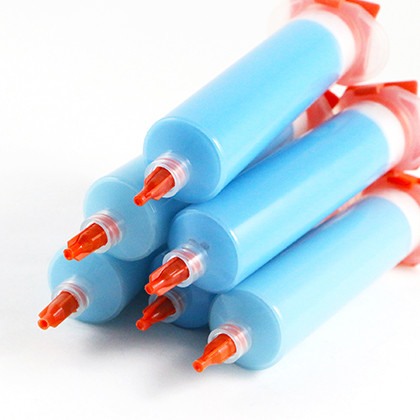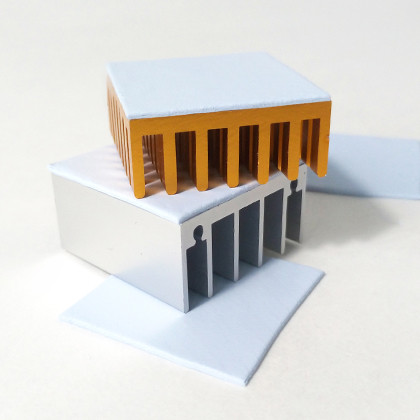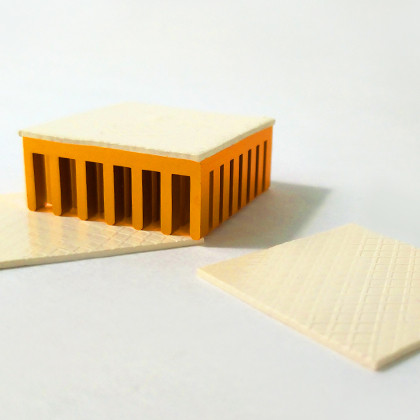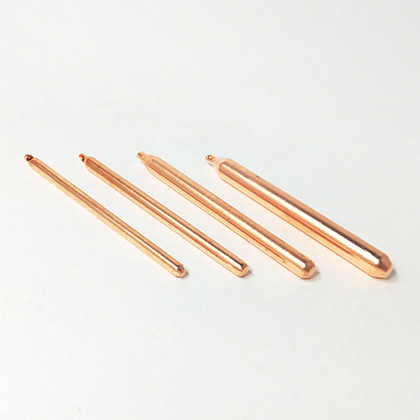Automotive
The automobile industry is one of the industries with technology and capital intensive. Its industrial chain is quite large. From traditional cars, SUVs, multi-purpose recreational vehicles, to the electric vehicles. For now, the world's car manufacturers pay most attention to electric vehicles. The development and application of the automotive industry have driven many business opportunities in the industry chain. With the development of AIOT, it has opened up more possibilities for smart car and accelerated the integration of human and machine, including self-driving system, safety assist system, transparent display components, car networking, and Human Machine Interface...etc. Smart vehicles will definitely become the "third living space" in the future.
Electric vehicle battery module:
When the battery is charged and discharged, heat will be generated. The temperature will be the key to affect the battery life and charge-discharge efficiency. Therefore, the design will mostly transmit the waste heat generated by the battery to outer casing of the battery module for heat exchange. Because there is a gap between the battery and the battery, it is often applied to a single-dose thermal putty or a two-dose epoxy potting compound as a caulking, and the top or bottom of the battery is matched with thermal pad that is very soft with low thermal conductivity (about 2.0 to 3.0W / mk) to transfer heat to outer casing.
Voltage converter:
Nowadays, the gasoline car or the future electric car will need to use the voltage converter when the car is started. It needs to use the AC to DC or DC to DC mode to convert the electricity to the optimum voltage. The moment of voltage conversion will generate a large amount of waste heat, and the temperature is also the key to the conversion efficiency, so the problem of heat must be solved. Most of these products are closed design. They usually use thicker thermal pads directly to conduct heat to the metal casing. The material of the thermal pad is soft and has resilience. It is good to avoid the vibration between the car's travel, resulting in a gap in the contact interface.The thermal conductivity within the range of 2.0 to 4.0 W/mk is common to use in the industry.
Car multimedia navigation system:
The embedded system will be the mainstream in the future. Compared with the simple audio-visual playback device, the hot problem will be more obvious in the future because of the multi-functional and high-performance. And it will still exist in products that are almost the same space as before. In particular, image processing wafers, with the demand for high image quality will require a high thermal conductivity thermal pad to conduct waste heat to the heat sink, or use a heat pipe to bring waste heat to less concentrated heat area, to solve the problem of excessive heat concentration.
Dashcam:
Because the external driving recorder is limited in space, as the image quality requirements of recording and playback images become higher and higher, various manufacturers will try their best to reduce the temperature of the wafers, in order to improve the reliability of dashcam. Due to there is the camera lens in dashcam, it is recommended to use low-volatility or non-silicone thermal pad to reduce the risk of contamination of the lens due to volatiles. Due to limited product space, it is also recommended to use insulated and light-weight ceramic heat sinks, with thermal double-sided tape to dissipate heat, and reduce electromagnetic interference and transmission. If the product design allows, it can also open holes on casing to make natural convection. In addition, when the image processing chip is really hot, a small fan can be added to dispel the heat.
Advanced driver assistance system:
With the market trend of unmanned driving in the future, there are more and more systems in the ADAS, so the heat problem must also be solved to avoid the problem that the product cannot operate normally due to heat. The electronic control unit (ECU), which is responsible for analyzing and processing the collected information and then outputting the control signal, has an important heat dissipation problem. The current design is common to use a thermal pad with thermal conductivity of 4.0 to 6.0 W/mk and combine it with aluminum extruded heat sink. However, because there may be many small-sized wafers on the substrate that have heat problem need to be solved, a small-sized thermal pad of different thickness is used to conduct heat, Let the heat of the wafer distributed throughout the substrate. The heat of the wafer is simultaneously directed to a large area of heat sink that can be exposed to these heat sources as a heat sink design.
T-Global Suggested Products: Thermal Putty/TG-A6200 Thermal Pad/TG-A3500 Thermal Pad/Heat Pipe
-
 Thermal Putty
Thermal Putty -
 TG-A6200 Thermal Pad
TG-A6200 Thermal Pad -
 TG-A3500 Thermal Pad
TG-A3500 Thermal Pad -
 Heat Pipe
Heat Pipe
